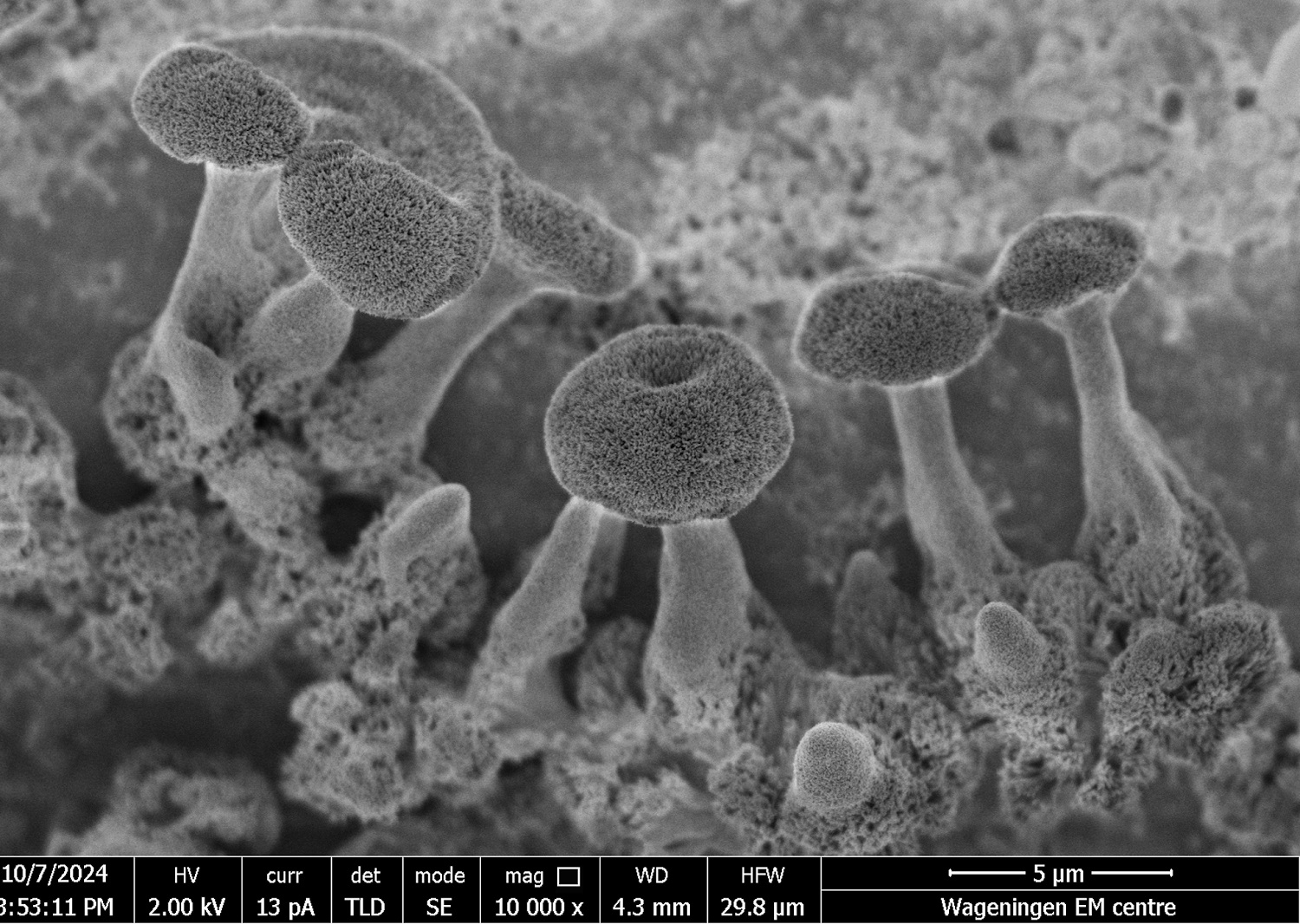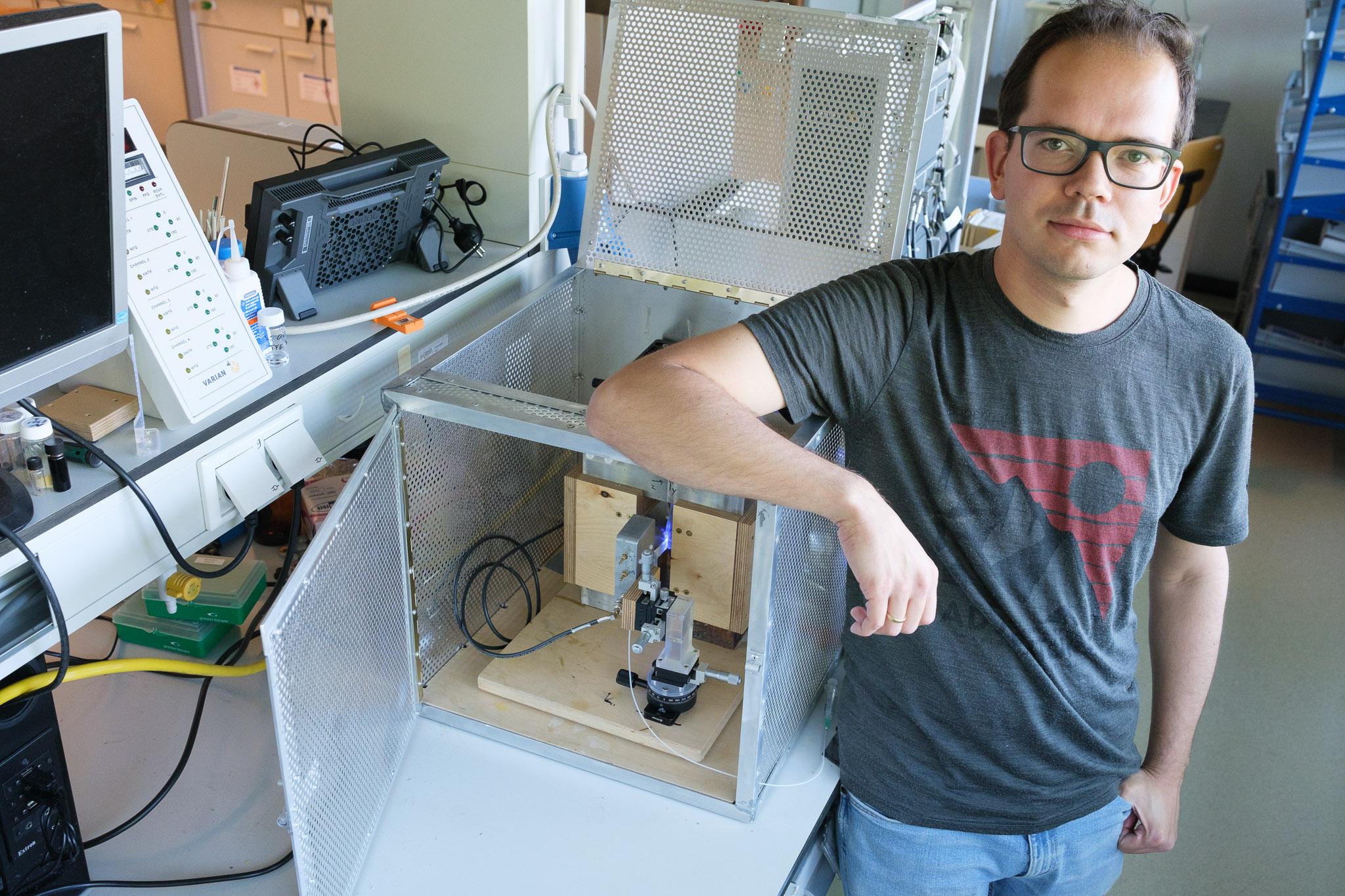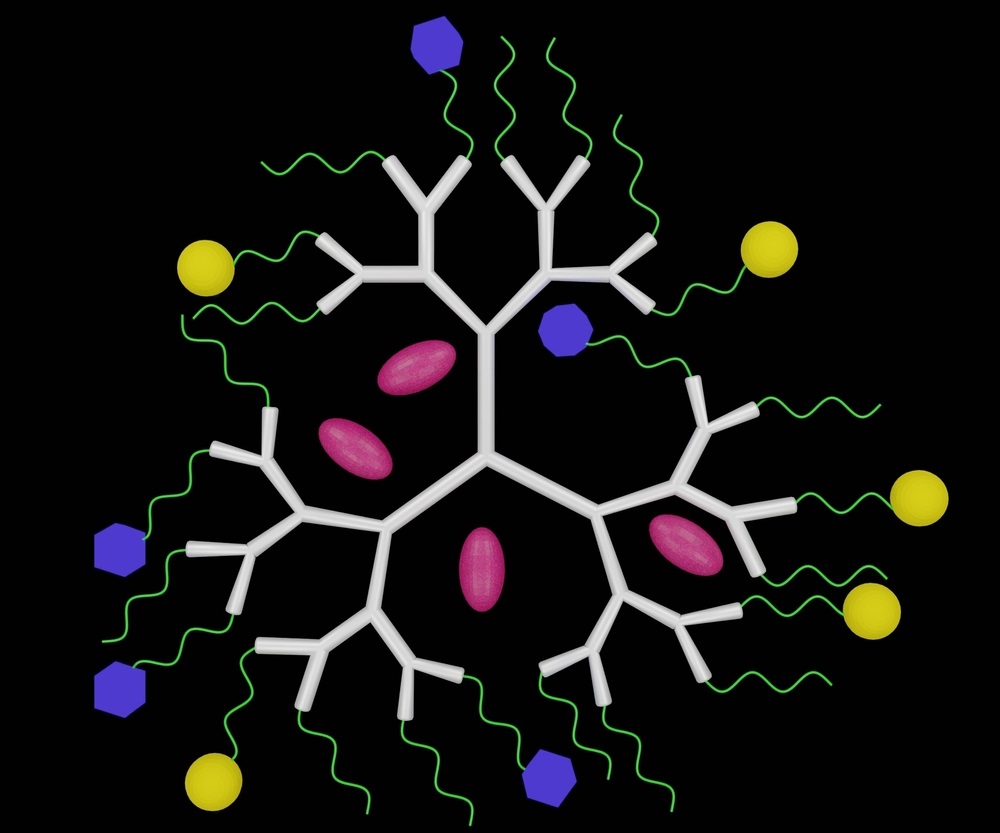In the world of adhesives, there are several kinds of Velcro and Velcro-like substances. In all of these materials, the basic principle is a mechanical form of adhesion, where the two surfaces interlock in order to stick together. A significant drawback of these well-known materials is the fact that they damage the surface when removed. Researchers from Wageningen and Groningen have found a solution.
Mushrooms
The researchers (Physical Chemistry and Soft Matter en BioNanoTechnology) designed a surface made of silicone rubber that is densely covered in tiny mushroom-shaped pillars. The substance adheres perfectly to rough surfaces such as textiles. Adhesion occurs because the tiny mushrooms interlace with the mesh of the fabric. The material is flexible, which prevents damage when it is removed
This is because the mushrooms communicate: they influence each other through the surface.
Joshua Dijksman, Physical Chemistry and Soft Matter
The production method is also new. The mould used to produce the mushrooms was 3D-printed. First a negative is made, followed by a positive of the cast. This produces the final material with the desired surface. A patent for this method is pending.
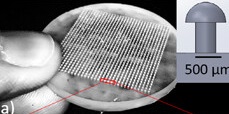
The closer the mushrooms are packed together, the stronger the adhesive effect, researcher Joshua Dijksman explains. However, this reduces the adhesive strength of each individual mushroom. ‘This is because the mushrooms communicate: they influence each other through the surface.’ When pulling one mushroom loose, the flexible surface causes you to also yank at its neighbour.
Experimenting
With a newly developed measuring process, the forces can be measured in a standardised way. The ‘communication’ aspect leaves room for experimentations, says Dijksman: ‘It leaves opportunities for optimisation, depending on what needs to be attached. To change the level of adhesion, you can alter the density of the mushrooms or the flexibility of the material.’
The material works well on rough surfaces. For smoother surfaces, experiments are being conducted with tiny suction cups instead of mushrooms. ‘We are currently checking to see if the communication principle also applies in this case’, Dijksman says. The research is part of the Soft Robotics 4TU programme.
Check the publication in Biointerphases here.

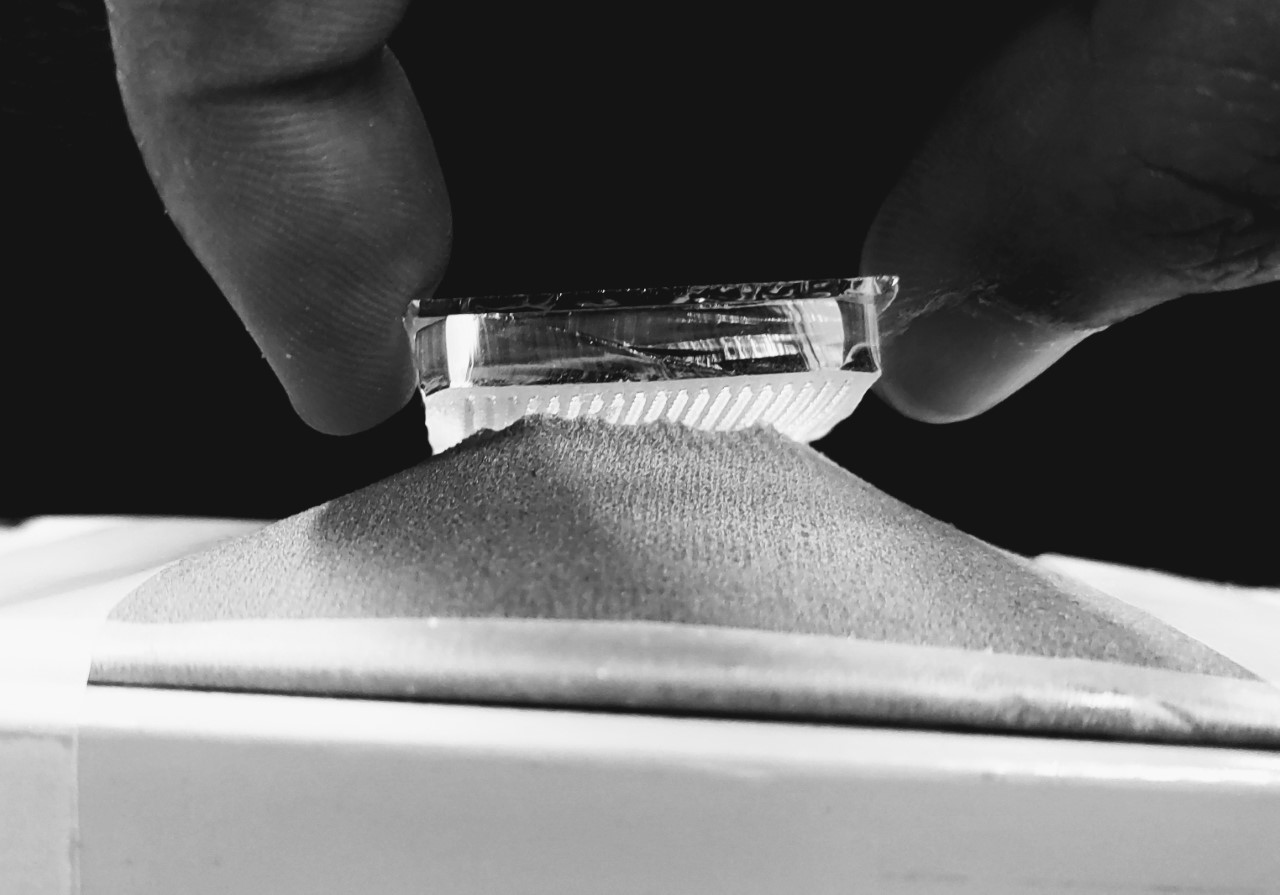 Photo: Preeti Sharma/Biointerphases
Photo: Preeti Sharma/Biointerphases 